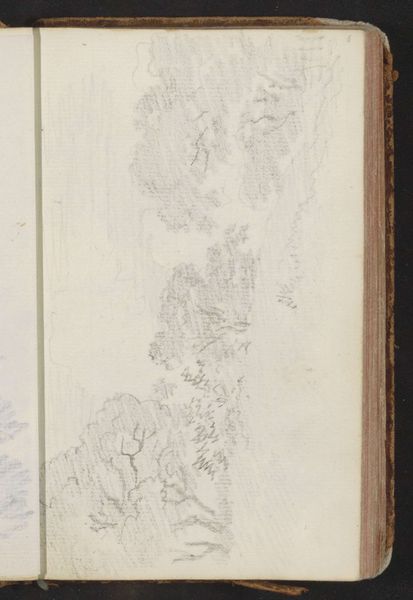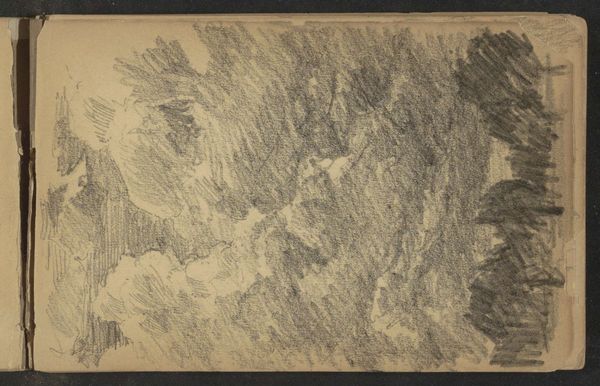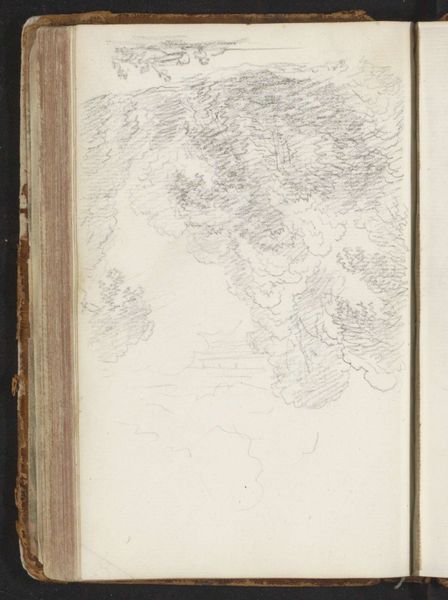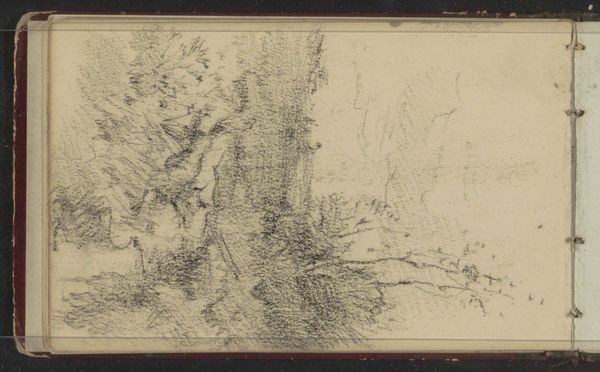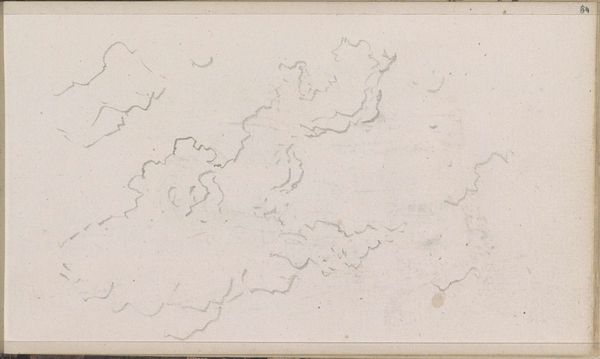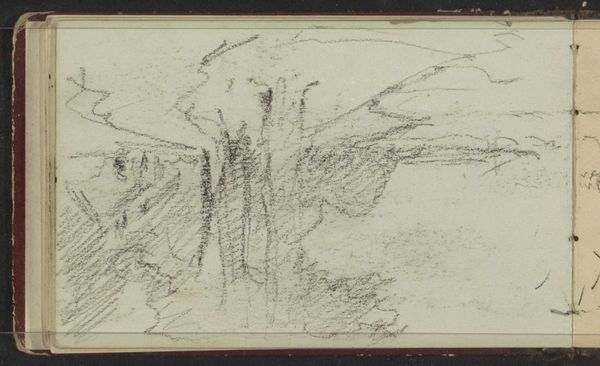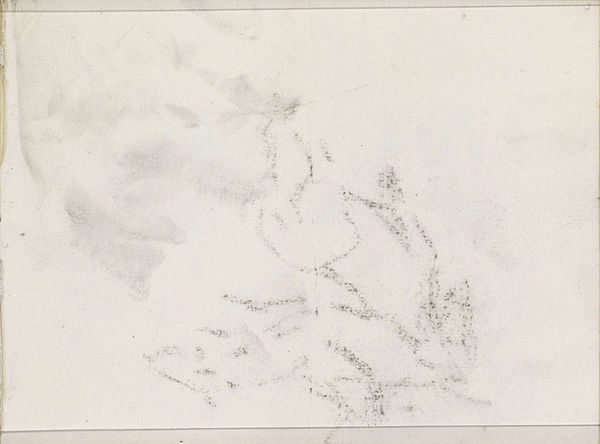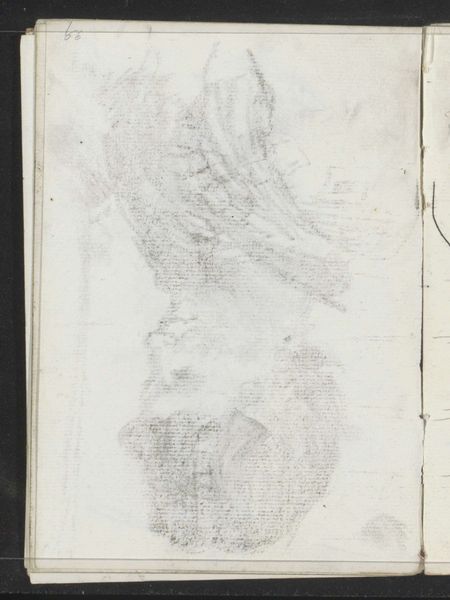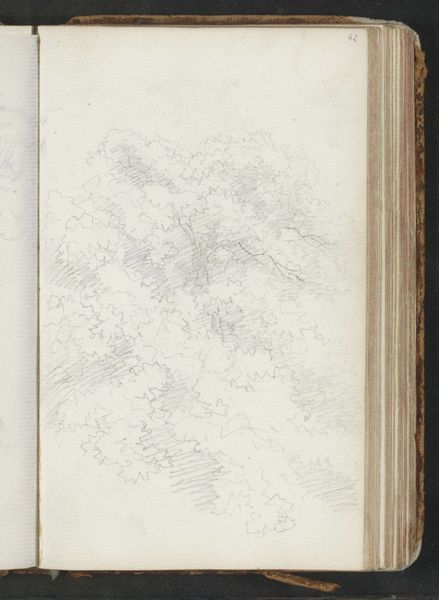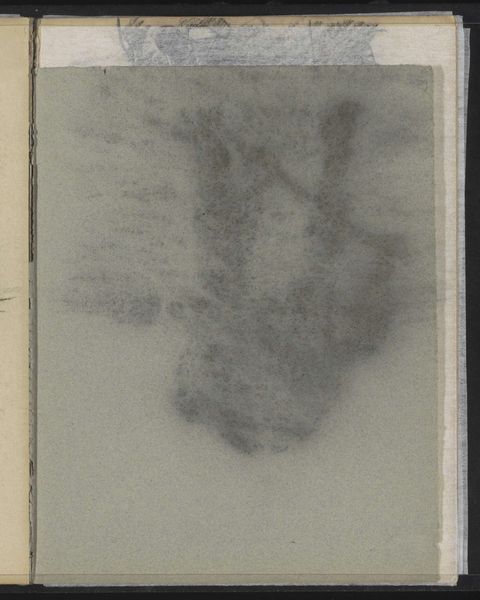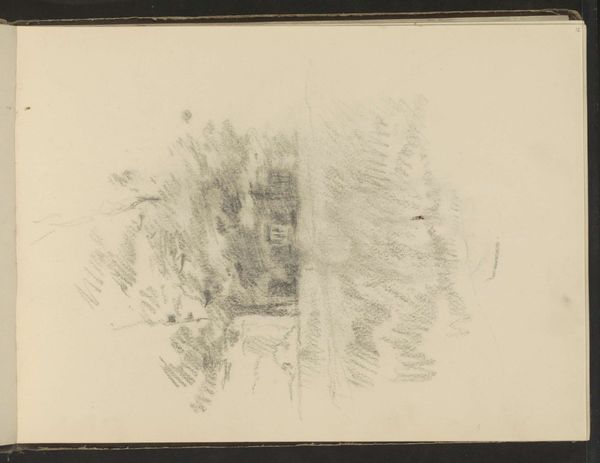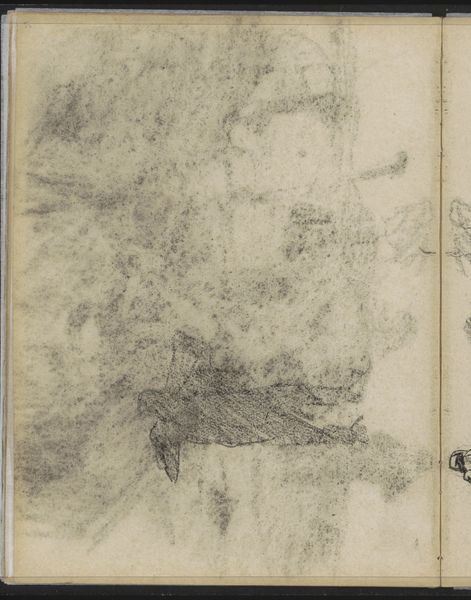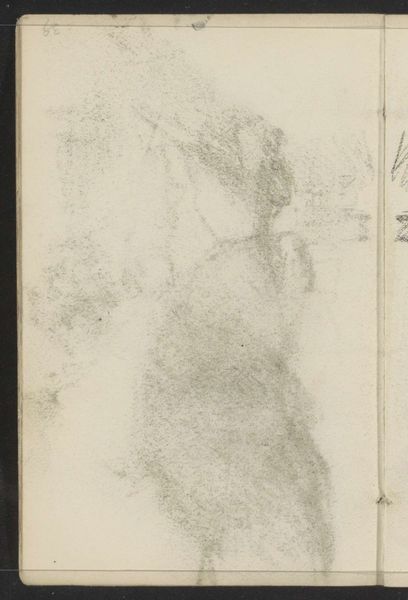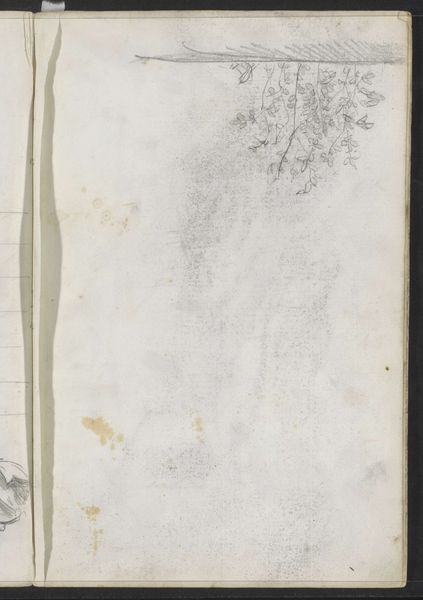
Copyright: Rijks Museum: Open Domain
Jean-Honoré Fragonard sketched these trees with black chalk on paper in eighteenth-century France. Note how he focuses on the dense foliage, capturing its volume with a flurry of marks. While Fragonard is best known for his paintings of playful lovers, this drawing reflects another important aspect of eighteenth-century artistic culture: the practice of sketching from nature. Artists like Fragonard turned to the natural world as a source of inspiration and authenticity. The Royal Academy of Painting and Sculpture played a central role, shaping artistic taste and providing training. Drawings such as this were often studies for larger compositions, and reveal the artist's working process. To fully understand the significance of this drawing, we can consult historical sources such as letters, treatises, and exhibition catalogs. These resources shed light on the artistic debates of the time and the social context in which Fragonard worked. By considering the institutional and cultural forces that shaped Fragonard's art, we gain a deeper appreciation for its meaning and significance.
Comments
No comments
Be the first to comment and join the conversation on the ultimate creative platform.
